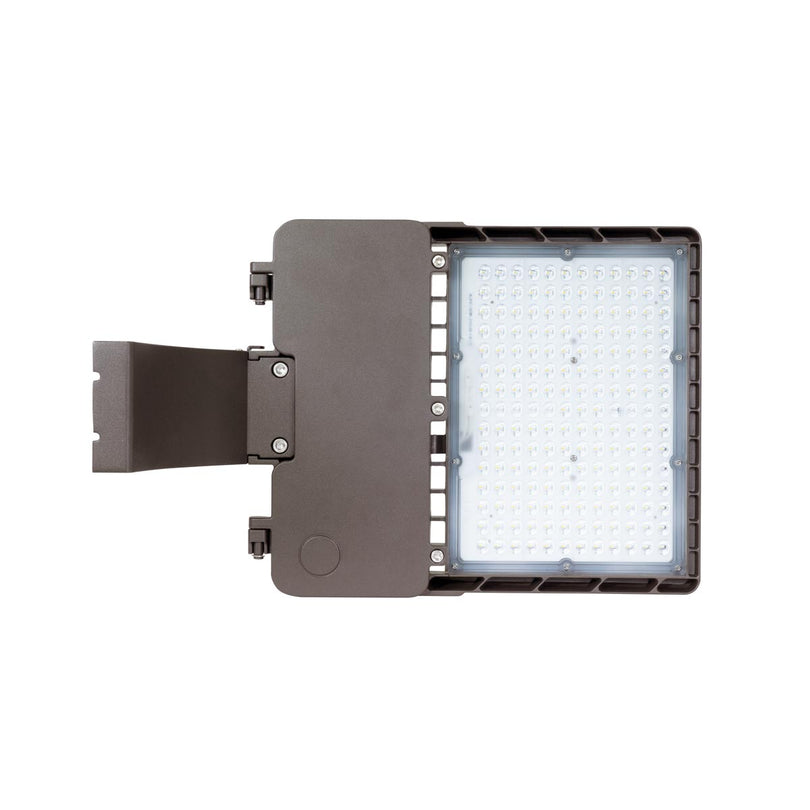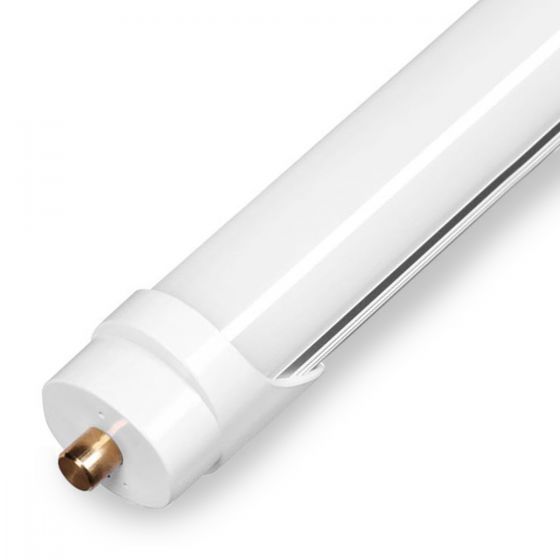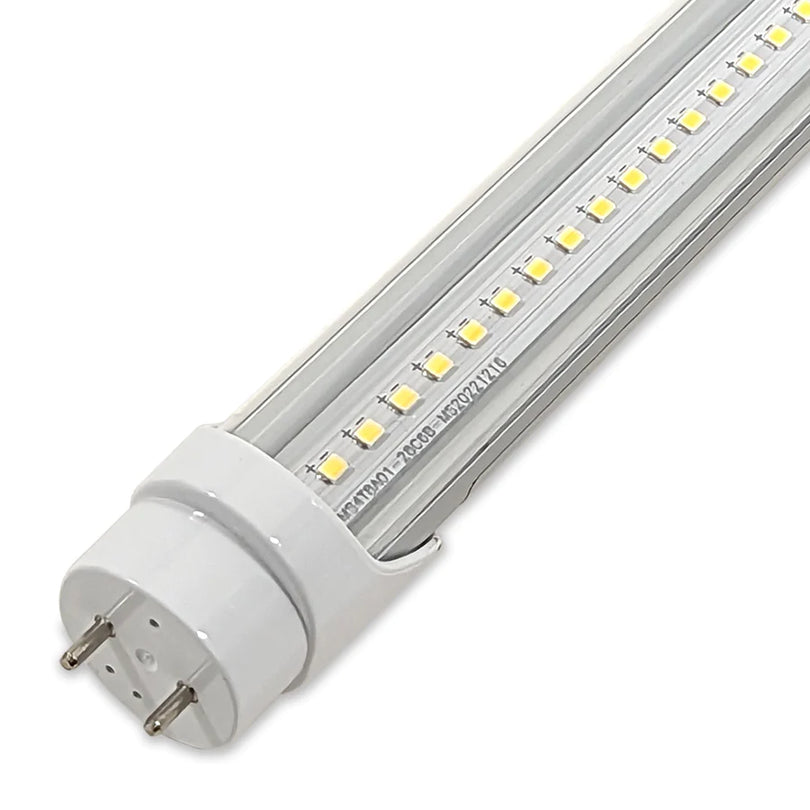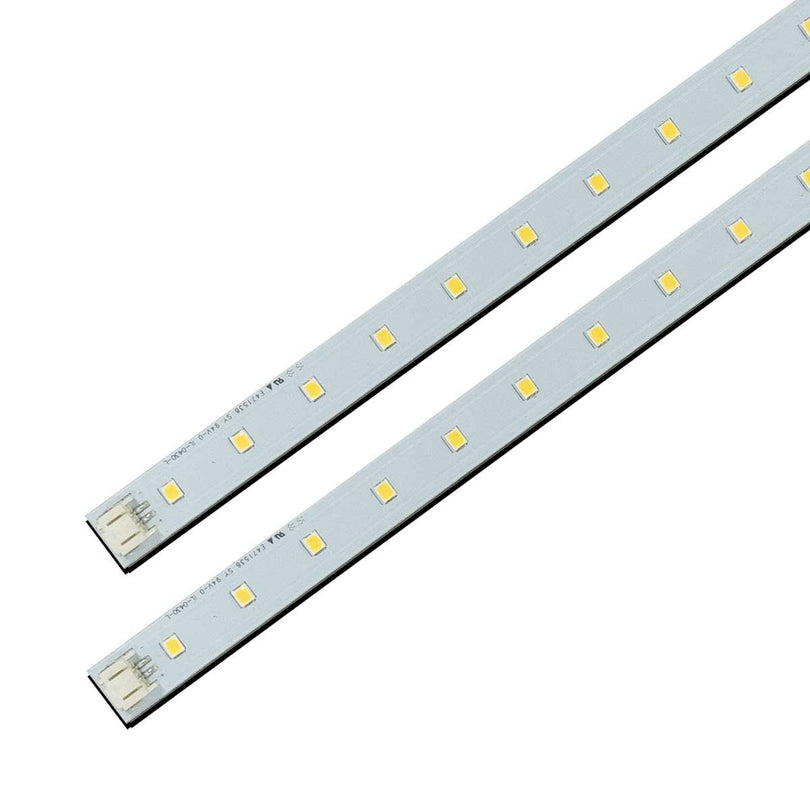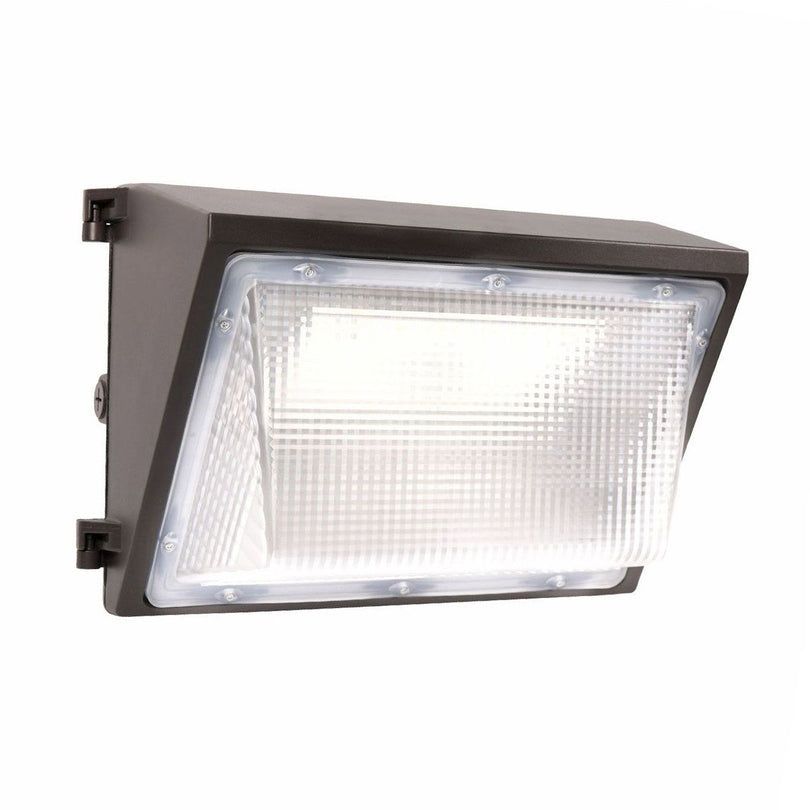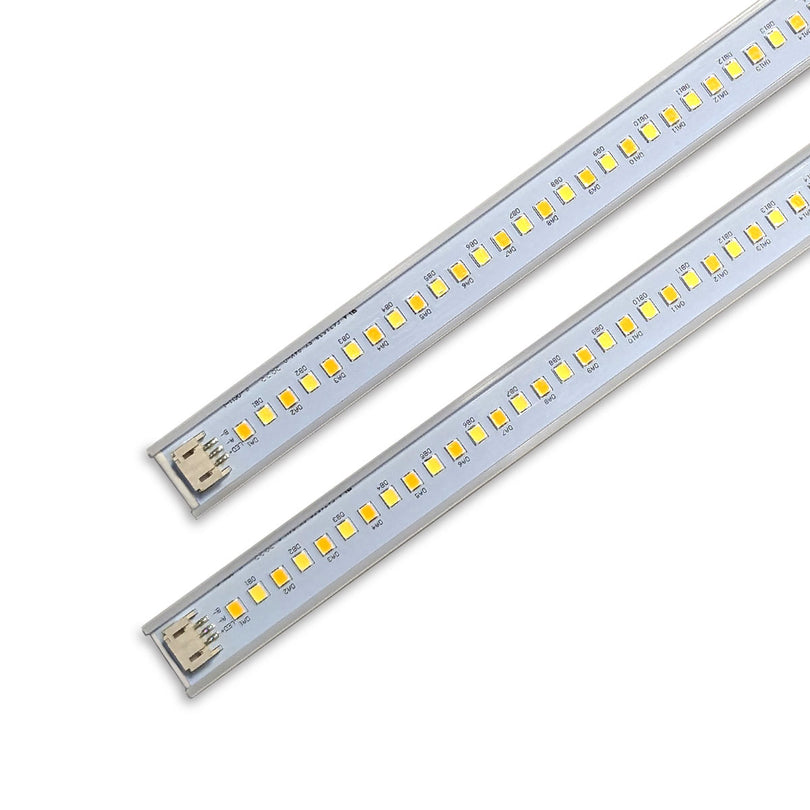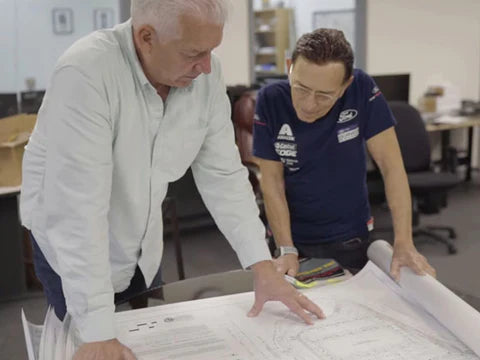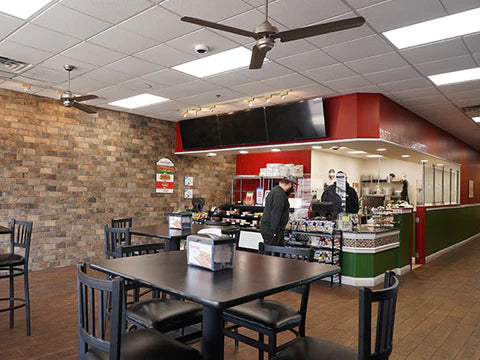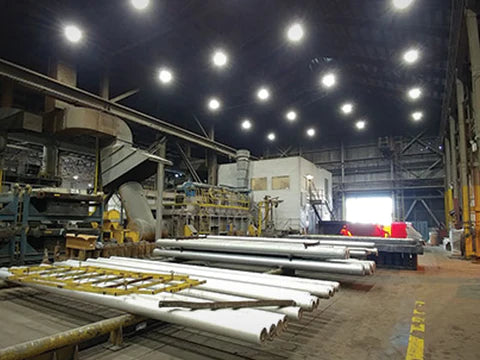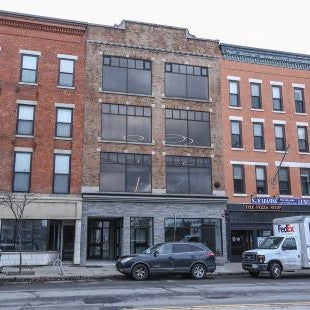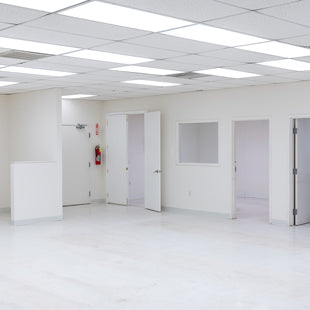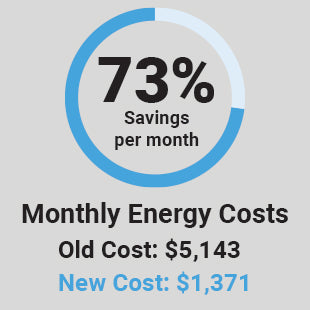Since their introduction in the 1970s as an improvement to mercury vapor and other HID (high-intensity discharge) lighting technologies, metal halide (MH) bulbs and fixtures have become one of the most popular choices for a wide range of commercial and industrial lighting applications. Metal halide bulbs with a "mogul" or E39 screw-in base (as shown in the photo below), are literally found everywhere — from industrial high-bay and low-bay fixtures, streetlights, and floodlights, to security lighting, landscape lighting, and even high-wattage recessed spotlights. The MH bulb is characterized by its large size (typically 10"-15"), high wattage (200W-1500W), and a filament reminiscent of Thomas Edison's lab.

Metal halide, like other HID lamps, produce light by sending an electric arc through a pressurized metallic vapor inside the bulb and require a warm-up period of several minutes to reach their full brightness. Like fluorescent lights, metal halides require a ballast to provide high starting voltages and to regulate current inside the bulb during operation. At startup, the ballast (built into the fixture) acts as a step-up transformer to raise voltage several times greater than the 110-220VAC supply voltage. This is why a metal halide bulb will not work in a standard household lighting fixture — aside from the fact that the larger E39 base will not fit. Similarly, a standard incandescent bulb would never be able to withstand the ballast voltage in a metal halide fixture.
In the late 1990s and through the early 2000s, prior to the introduction of LED lighting, the compact fluorescent lamp (CFL) saw widespread acceptance as an extremely energy-efficient alternative to a variety of lighting technologies. Self-ballasted (meaning the ballast is built into the base of the bulb) and using less than a third of the power of incandescent bulbs, CFLs lent themselves to a wide variety of applications because they could be used in virtually any standard, non-ballasted lighting fixture operating on 110/220VAC. If the bulb and/or the integral ballast fails, the entire assembly is simply and easily replaced. Despite health and environmental concerns over their disposal, relatively high manufacturing costs, and several other disadvantages, CFLs were sold everywhere and the race was on to adapt them to other types of lighting technologies, including metal halide. Although metal halide are much more energy efficient than incandescent, CFL still offered the advantages of no noticeable warm-up time, longer life, reduced maintenance, and respectable energy savings over the long haul.
High-output, self-ballasted CFL bulbs with E39 screw-in bases (like the one shown in the photo below) that can be used as equivalent replacements for 200W-850W metal halide bulbs, started to become available in the early 2000s. However, with input voltages ranging from 120-277VAC, these CFLs cannot be used in most standard metal halide fixtures unless the fixture has had its high-voltage ballast either bypassed or removed. To alleviate this problem, lighting manufacturers began to develop a wide variety of ballast-free, CFL-compatible fixtures — high-bays, low-bays, recessed down-lights, etc. As it turns out, these ballast-free fixtures are also compatible with LED lights, which leads us to our next point — the obsolescence of the CFL.
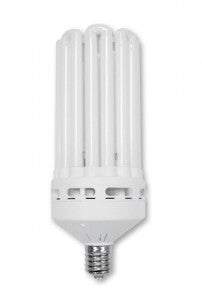
In the last five years the introduction of LED lighting products, which offer numerous and significant advantages, have virtually ended CFL's short reign as the energy-saving lighting alternative of the future. LED alternatives to CFL are easier to manufacture (making them less expensive), are more energy efficient, have lifespans that are 3-5 times longer, have wider operating temperature range (most CFLs cannot be used outdoors), generate far less heat, pose no environmental or disposal issues, and prices keep coming down. LED retrofit bulbs are not self-ballasted like CFLs, because they don't need one!
Most LED products will run on any voltage from 100-277VAC and the flexibility of the technology lends itself to an unlimited number of bulb and fixture designs. LED lamps with E39 or standard A19 screw-in bases (like the ones shown in the photo below) require approximately the amount of power of a metal halide and are at least 30% more energy efficient than CFLs. They are available in a full range of capability (lumen output, efficacy, color, etc.) to meet any requirement. The only caveat is that over time, like CFL, they will not withstand the startup voltage and ignition pulsing of a ballasted fixture, so the ballasts in older metal halide fixtures must be bypassed or removed to be used with an LED retrofit light.

If this all seems very confusing, the case of a recent ELEDLights customer who has come full circle with MH, CFL, and LED should help to clear things up. Just a few years ago, Congregation AABJ&D of West Orange, NJ converted their recessed metal halide downlights to CFL. As a synagogue working within a limited budget, savings in any area are extremely critical. According to Rob Wagner, who co-chairs these types of projects for the congregation, this is what made the CFLs so attractive. "We removed all of our metal halide bulbs, cut out the ballasts, and left the metal halide fixtures in place above the ceiling," Wagner explains. The congregation purchased high output CFLs and installed them in the recessed fixtures' E39 sockets which remained powered by the existing 220V mains. "The CFLs saved energy but were expensive and after a year or so the tubing became very brittle at the base, making them difficult and dangerous to remove," Wagner continues.
In May, the synagogue purchased twelve of ELEDLights' 54W Corn Lights to replace their CFLs. "We've been waiting for LED lamps to meet our price targets so that we could replace the aging CFLs," says Wagner. Although the energy savings in going from CFL to LED is not as dramatic as when they changed from metal halide to CFL, "the labor savings will have a big impact." While most high output CFL lamps have a life expectancy of about 10,000 hours, ELEDLights Corn Lights are warranted for 5 years and have a life expectancy of 50,000 hours. In addition, because the synagogue's fixtures have already had their ballast removed , their conversion from CFL to LED is, quite literally, as easy as changing a light bulb!

The small sanctuary shown in the photo on the right has a ceiling height of 12 feet. The Congregation's main sanctuary has a ceiling height of 22 feet, pews bolted into the floor and several raised areas. As Wagner stated, "The labor to replace CFLs every year or two is much more than just an electrician and a ladder! The LED lamps from ELEDLights will pay for themselves based on labor savings attributed to as few as 1/3 of our total luminaires."
"My background is construction and real estate development, and my co-chair is an owner of one of the largest suppliers to the electric utility industry, so we have decades of experience with electrical design and illumination," Wagner points out. "Going forward, we expect to re-lamp all of our CFL's and incandescent fixtures with LEDs. Your corn lights met our pricing requirements, in addition to giving us the color rendition and temperature we were looking for. For us, lumens on the ground are only a part of the calculation, we also want our artwork and FF&E (furniture, fixtures, and equipment) to look good."

 215.355.7200
215.355.7200